
The Soaring Highs and Stark Lows of Spaceflight in 2023
It’s time to look back at spaceflight in 2023, a real “two steps forward, one step back” kind of year, filled with highs, lows, and everything in between.
The New Space Race is in full swing, and with both public and private entities pushing the limits of what’s possible, failures are an inevitability, as is progress. 2023 was no exception, with some notable achievements like historic deep space missions and advancements in satellite and rocket technology, alongside setbacks such as fiery launch mishaps and maddening project delays.
SpaceX’s Starship finally flies… sorta
Starship, the most important rocket currently in development, performed two flights in 2023, both ending in explosions. SpaceX made considerable progress with its megarocket during the calendar year, but the inaugural flight on April 20 was an epic fiasco that served to delay the program by several months.
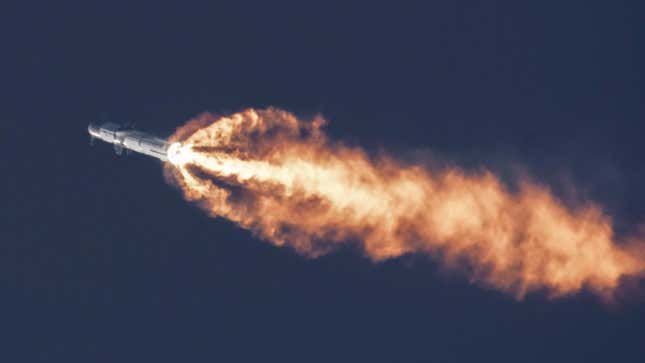
Launching from SpaceX’s Starbase facility in Boca Chica, Texas, the Super Heavy booster, powered by 33 Raptor engines, laid waste to its immediate surroundings owing to the absence of protective infrastructure. A gigantic pit formed directly beneath the launch mount, with the displaced dust and debris falling onto nearby areas. The launch also resulted in a 3.5-acre fire on state park land. Conservation groups sued the Federal Aviation Administration, claiming the launch should have never been allowed.
Adding insult to injury, SpaceX struggled to destroy the 394-foot-tall (120-meter) rocket after it entered into a fatal tumble above the Gulf of Mexico. Roughly 40 seconds passed before Starship finally succumbed to the self-destruct command—an intolerable delay for such an important safety feature.
An ensuing investigation by the FAA, accompanied by the implementation of 63 corrective measures, pushed the second Starship launch all the way to November 18. The second launch showcased a newly implemented water deluge system designed to temper the booster’s force, along with a hot staging technique aimed at reducing stress on the rocket during stage separation. Starship achieved several key milestones during the second flight, including stage separation, but both the booster and the upper stage were destroyed during the eight-minute test flight.
The rocket, designed to be fully reusable, is poised to transform the industry, boasting a substantial payload capacity and the potential for cost-effective launches. SpaceX CEO Elon Musk aims to use the rocket for transporting settlers to Mars, while NASA envisions it as a means to send astronauts to the Moon’s surface. SpaceX made good but not great progress with the rocket in 2023; even so, the program, with two launches now in the books, is in full swing. The coming year should bear witness to even more progress and possibly even a trek to low Earth orbit.
In other SpaceX developments, the company maintained its torrid pace of launches, positioning itself to achieve 100 orbital missions within the year. The company debuted its Starlink V2 minis, which feature several design improvements and a smaller form factor. This compact size enables the company to deploy these satellites using the Falcon 9 rocket while the development of Starship continues.
A bunch of rockets exploded
2023 reinforced the old adage, “What goes up must come down,” and it also reminded us that sometimes things return to Earth earlier than anticipated. SpaceX’s Starship failed during its two demo flights, but so did other fledgling launch vehicles.
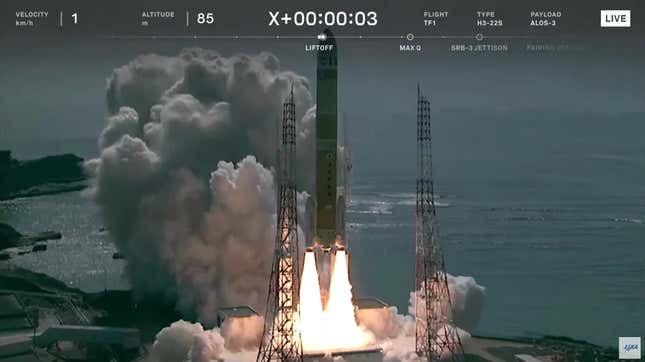
The H3 rocket, Japan’s new flagship rocket, experienced a critical failure after liftoff on March 7, when its second-stage engine failed to ignite, leading to the Japan Aerospace Exploration Agency (JAXA) issuing a self-destruct command. This incident marked a significant blow to Japan’s aspirations in the space industry, particularly affecting its goal of increasing its presence in the competitive fields of satellite launching and space exploration. The H3, intended to be a flexible and cost-effective successor to the reliable H2A rocket, was part of Japan’s broader efforts to gain a foothold in the satellite launch market. Making matters worse, the H3 rocket was carrying a $200 million satellite during the inaugural flight, attracting the ire of critics who say an untested rocket should never have carried such a valuable payload.
One of the more interesting launches to occur in 2023 was the first flight of Relativity Space’s Terran 1—a rocket built primarily from 3D-printed parts. Terran 1 failed to reach orbit during its launch on March 23, but it did survive Max-Q (the peak of aerodynamic stress), strongly hinting at the viability of 3D-printed rockets, which (in theory) will be quick and cheap to build. The California-based company is already working on the next version, which promises to be bigger and better.

ABL Space Systems’ tiny RS1 rocket also failed during its inaugural launch in early January, creating a serious mess at the Alaska launch site. In September, Rocket Lab’s usually reliable Electron experienced an in-flight anomaly, grounding the SpaceX rival for three months. That said, Rocket Lab reached an important milestone in 2023, sending up rockets from the U.S. as well as from its launch facility in New Zealand.
As for United Launch Alliance’s Vulcan Centaur, it never left the ground. The yet-to-fly rocket endured another setback in 2023 when an explosion occurred at the test stand on September 29, causing a significant delay in its development. This incident, involving the Vulcan Centaur V upper stage, was particularly damaging due to the rocket’s already lengthy development process, compounded by delays in receiving engines from Blue Origin. The explosion added further uncertainty to the program, significantly impacting the timeline for Vulcan’s maiden flight, now expected on January 8, 2024.
Boeing’s Starliner woes continued
Speaking of not leaving the ground, Boeing’s beleaguered Starliner remained on terra firma for the duration of 2023. The spacecraft, funded under NASA’s commercial crew program, is meant to carry passengers to the International Space Station—something the capsule has yet to do owing to a seemingly endless succession of technical problems.
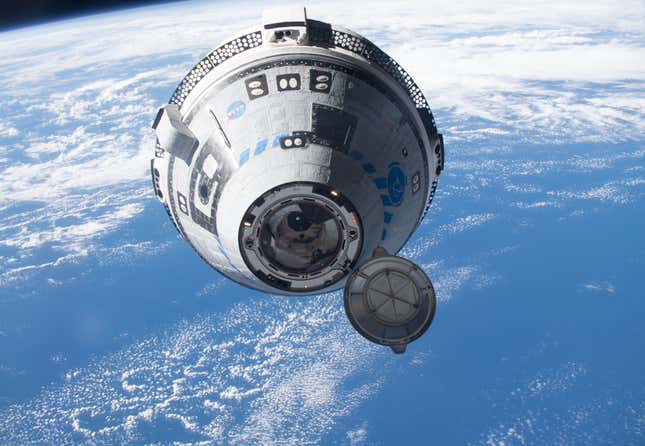
A crewed test flight scheduled for July 21 was postponed due to deficiencies in the parachute system and the discovery of flammable tape used to cover the wiring harnesses inside Starliner. In a dubious milestone, the CST-100 Starliner program passed the $1 billion mark in terms of losses in July (Boeing is working under a fixed price contract, so it’s on the hook for these losses). The first crewed flight of Starliner is now scheduled for April 2024.
The dawn of space-based solar power
Among the many headline-stealing stories about spaceflight this year, one particular event, flying under the radar, was perhaps the most important space-related technological breakthrough of 2023. Researchers from the California Institute of Technology beamed solar power from space to Earth without a single wire. It’s a technological first and a breakthrough with profound implications for renewable energy. The experiment potentially paves the way for a new era of clean, consistent, and abundant power sourced directly from space. It could make harnessing the Sun’s energy more efficient, offering a sustainable solution to Earth’s growing energy demands while reducing our dependence on fossil fuels. So yeah, a big deal.
Virgin Orbit’s crash and burn
The year opened with tremendous excitement for Virgin Orbit, but by April the Richard Branson-founded company had declared bankruptcy. The “Start Me Up” mission, launching on January 10, was supposed to be the first orbital launch from British soil. Instead, the LauncherOne rocket, having been deployed from a modified Boeing aircraft named Cosmic Girl, failed 30 minutes into the mission—the result of a faulty $100 filter. The anomaly set Virgin Orbit on a path toward its eventual demise, with shareholders quickly losing confidence and the company formally declaring bankruptcy on April 4.
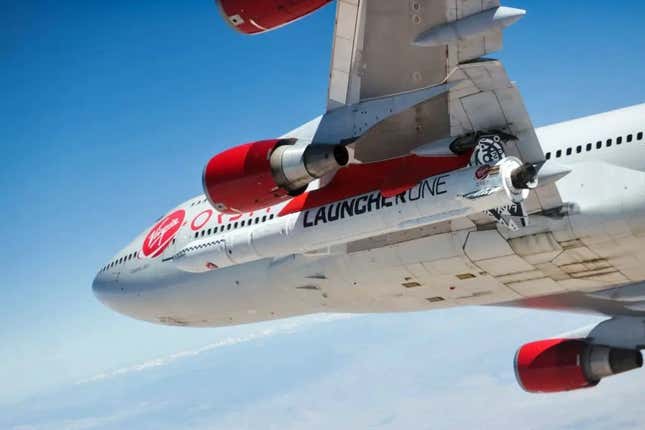
As for Branson’s space tourism venture, Virgin Galactic, it did manage to perform two rare missions in 2023, but the company ended the year by laying off 185 staff and pausing operations to focus on the development of its upgraded spaceplane.
Up, up, and away!
Despite these setbacks and hurdles, several important projects did manage to achieve significant milestones in space exploration, scientific research, and technological development.
Amazon’s Project Kuiper finally got off the ground in 2023, launching two prototype satellites to orbit on October 10. The units performed as expected once in space, setting the stage for Amazon and its partners to deploy the entire constellation across 46 launches from now until 2029. Amazon’s Project Kuiper, akin to SpaceX’s Starlink, is designed to deliver fast and affordable broadband internet globally, targeting underserved regions.
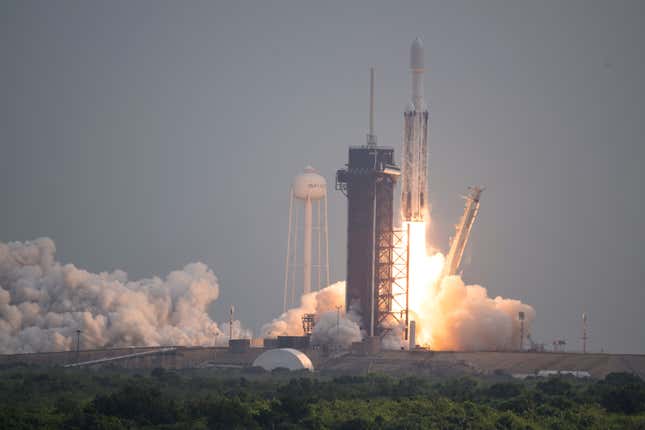
Several science missions got underway in 2023, including JUICE, the Euclid space telescope, and Psyche. Launched by the European Space Agency in April, JUICE is a mission dedicated to exploring Jupiter’s icy moons, Ganymede, Callisto, and Europa, which are thought to harbor subsurface oceans, making them potentially habitable environments. The Euclid mission, also developed by ESA and launched on July 1, is a space telescope designed to study the universe’s dark matter and dark energy, aiming to understand their influence on the universe’s expansion and the formation of cosmic structures. NASA’s $1 billion Psyche mission, which went up October 13, is focused on the exploration of the asteroid 16 Psyche. This unique asteroid is believed to be the exposed core of an early planet, and it could provide critical insights into the building blocks of planet formation and the early history of our solar system.
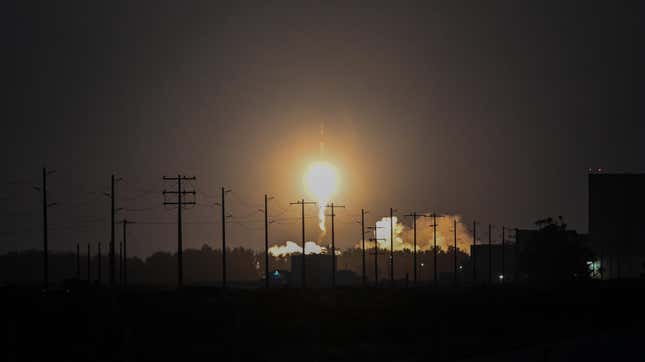
The U.S. Space Force, working with Firefly Aerospace and Millennium Space, achieved an important goal in 2023 through its Victus Nox mission—a rapid-launch satellite mission. The project involved the rapid preparation of a launch in less than a day, swiftly followed by a successful lift-off. By doing so, the team set a new launch speed record. The Victus Nox mission broke new ground by significantly speeding up satellite deployment, a process that usually takes months or years. This rapid launch capability is crucial for the Space Force, enabling quicker responses to the emerging demands of space operations.
Private companies in Europe and China also broke new ground in 2023.
Spanish company PLD Space achieved a significant milestone, both for itself and Europe, with the successful suborbital launch of its Miura 1 rocket on October 6. Europe has ways to go when it comes to catching up with SpaceX, Rocket Lab, Blue Origin, and FireFly Aerospace, but this is an encouraging development for its private sector.
On July 12, private Chinese company Landspace launched its Zhuque-2 rocket, making it the first company to successfully send a methane-fueled rocket to orbit. For many rocket companies, including SpaceX, methane represents the propellant of the future, as it offers both efficiency and environmental benefits, particularly in terms of lower carbon emissions and the potential for on-site production on Mars for return missions. Earlier in the year, Chinese company Space Pioneer hit a pair of milestones: On April 12, it became the first startup to successfully reach orbit on its first attempt, while also becoming the first Chinese company to reach orbit with liquid rocket propulsion.
Lucy gets three asteroids for the price of one
NASA’s Lucy probe, en route to visit Jupiter’s Trojan asteroids, managed to swing by an asteroid along the way. As Lucy zipped past Dinkinesh on November 1, it imaged not one but two asteroids—or so it seemed.
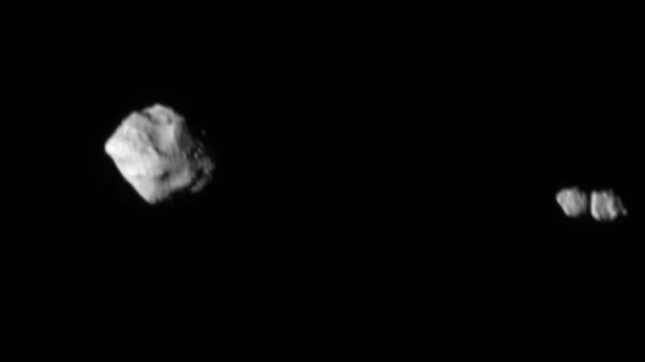
Upon further inspection, a third asteroid made an appearance, clinging closely to its newfound partner. NASA said it’s the first direct observation of a contact binary orbiting another asteroid.
Asteroid canister returns to Earth, promptly refuses to open
In 2023, even when things went right, they still found a way to go wrong. On September 24, the OSIRIS-REx spacecraft returned to Earth, dropping off rocky samples collected from asteroid Bennu. The canister, after landing successfully in the Utah desert despite a wonky parachute, was swiftly transported to a NASA lab, where technicians discovered an abundance of materials along the canister exterior. Analysis of these bonus samples revealed materials rich in carbon and also water in the form of hydrated clay minerals—crucial elements in the formation of Earth and possibly the rise of life.
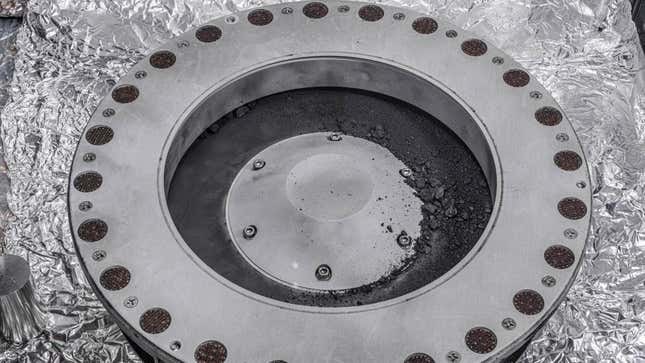
Surprisingly, however, the technicians have been unable to open the canister itself and access the bulk of the samples. The culprits are two of 35 fasteners on the TAGSAM (Touch-and-Go Sample Acquisition Mechanism) head, which refuse to bulge with project-sanctioned tools. NASA is now formulating a plan for opening the canister without compromising the integrity of the precious cargo inside.
Moon missions without the right stuff
The Moon was not kind to us puny humans in 2023, claiming at least three missions.
Tokyo-based ispace’s attempt to become the first private mission to land on the Moon failed when its lunar lander did not successfully reach the lunar surface on April 25. The company’s Hakuto-R Mission 1 (M1) lander, packed with all sorts of technological goodies, unexpectedly accelerated on its way down before crashing onto the Moon. The ensuing investigation found that a large cliff caused the lander to miscalculate its distance to the surface. From a glass-half-full perspective, the spacecraft did manage to travel deeper into space than any other commercial spacecraft, so there’s at least that to celebrate.

The failure of ispace’s lander was a serious setback, involving the loss of technology and investment and delaying the company’s goal of a successful private lunar landing. This incident significantly impacted investor confidence, but ispace is aiming for a second attempt in 2024.
Russia’s Luna-24 was the second lander to crash onto the lunar surface in 2023, doing so on August 19. Luna-24 marked Russia’s first Moon mission attempt in 47 years, highlighting the nation’s lag in lunar exploration.
NASA’s Lunar Flashlight, an orbiter designed to study signs of potential water ice on the Moon’s surface, didn’t fare much better. In May, the space agency, after months of trying to resolve an issue with cubesat’s propulsion system, finally gave up, formally ending the mission.
India broke new lunar ground
India had much better luck, achieving a significant milestone in 2023 by successfully landing on the lunar surface, marking a historic moment for the country’s space exploration efforts. The Chandrayaan-3 lander and rover successfully performed a soft lunar landing on August 23, positioning India among the elite group of nations that have accomplished this feat. With this achievement, India became the fourth country, after the Soviet Union, the U.S., and China, to land on the Moon and the first to reach the lunar south pole. Chandrayaan-3 did some important scientific work before succumbing to the eventual lunar night, uncovering traces of a volatile element.
No Artemis mission, but plenty of developments
NASA’s next Artemis mission to the Moon is scheduled for late 2024, and teams spent this year preparing to send humans back to the lunar environment.
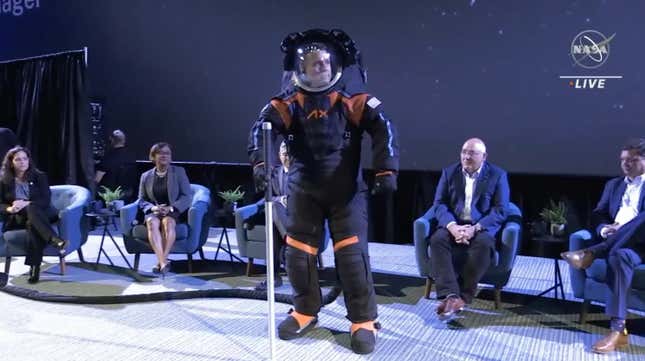
The space agency unveiled a prototype Moon suit being developed by Axiom Space, which astronauts will wear during the planned Artemis 3 mission to the surface. Dubbed AxEMU, or Axiom Extravehicular Mobility Unit, it’s the first Moon suit to be developed since the Apollo era.
NASA also announced the crew for Artemis 2, in which four astronauts will embark on a historic mission around the Moon, marking the first crewed lunar flyby of the Artemis program. The Artemis 2 crew consists of NASA astronauts Victor Glover, who will serve as pilot for the mission, Christina Koch and Reid Wiseman as mission specialists, and Canadian astronaut Jeremy Hansen as mission commander.
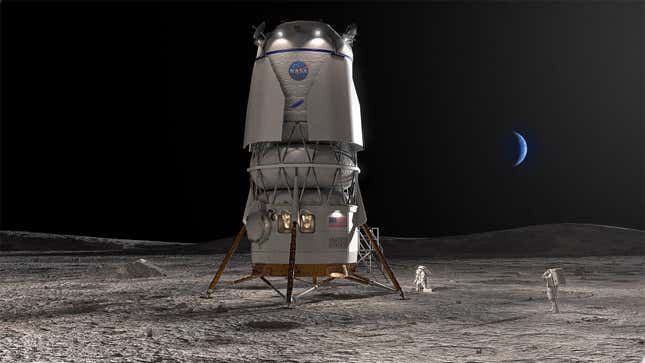
NASA, seeking an alternative to SpaceX’s Moon lander, signed a $3.4 billion contract with Blue Origin. Under this agreement, the Jeff Bezos-founded company will design, develop, and test a crewed lunar lander, known as Blue Moon.
But like so many other things on our year-end wrap up, these developments came with a gray lining. NASA officials admitted that the Space Launch System (SLS) rocket, which has already gone $6 billion over budget, is unaffordable. And earlier this month, the Government Accountability Office said Artemis 3 is not likely to happen in 2025 and will slip to at least 2027.
So that’s the year in a nutshell—in this challenging industry, progress is often painstakingly slow and methodically achieved, marked by both triumphs and setbacks. Failures, though disheartening, can serve as necessary stepping stones. In the grand scheme of space exploration, patience and perseverance are not just virtues but necessities, reminding us that the journey to the stars is a marathon, not a sprint.
For more spaceflight in your life, follow us on X (formerly Twitter) and bookmark Gizmodo’s dedicated Spaceflight page.
اكتشاف المزيد من موقع دبليو 6 دبليو
اشترك للحصول على أحدث التدوينات المرسلة إلى بريدك الإلكتروني.
